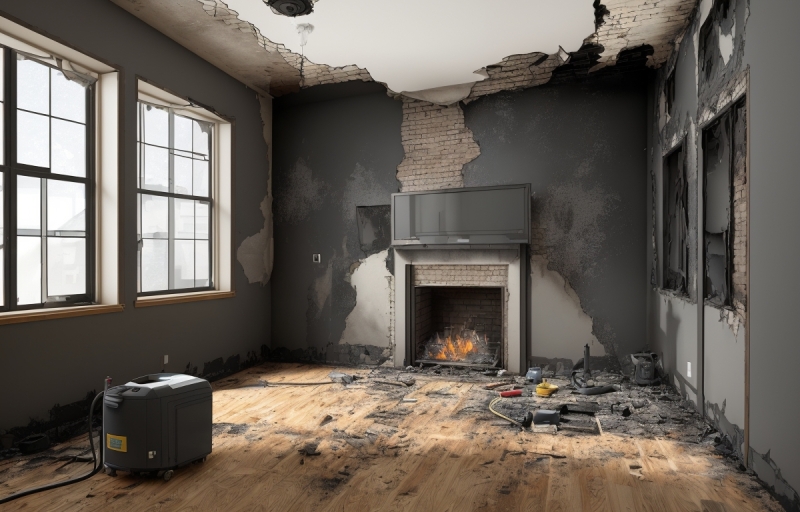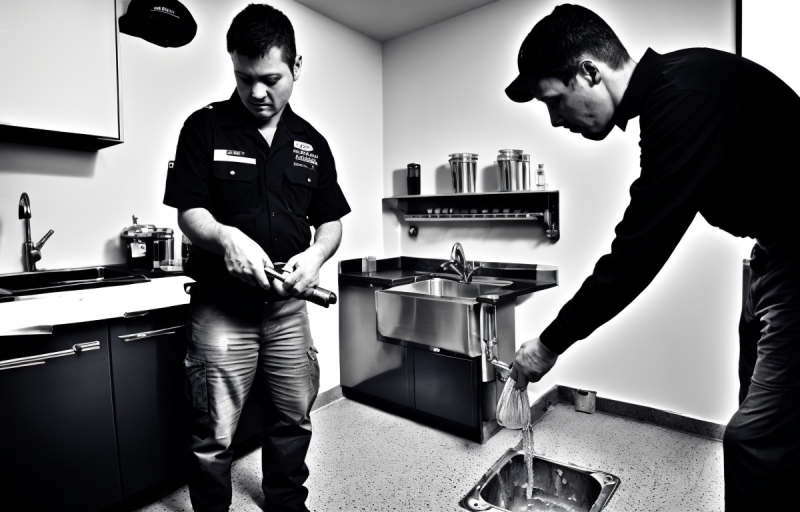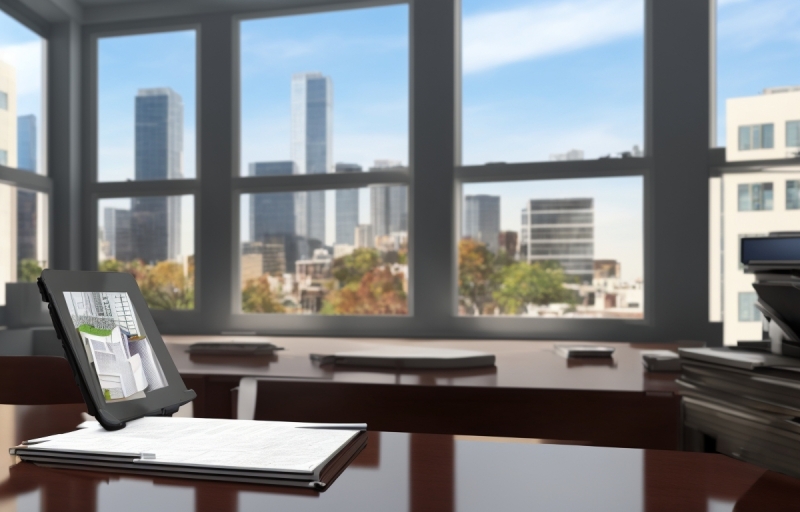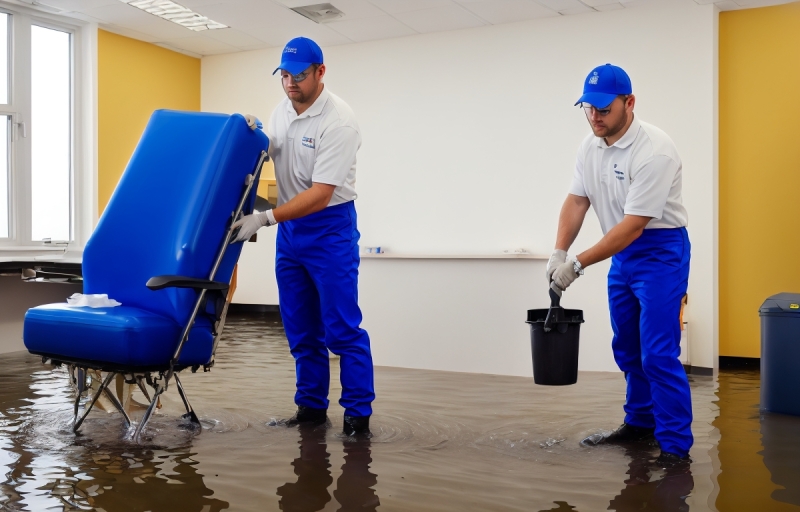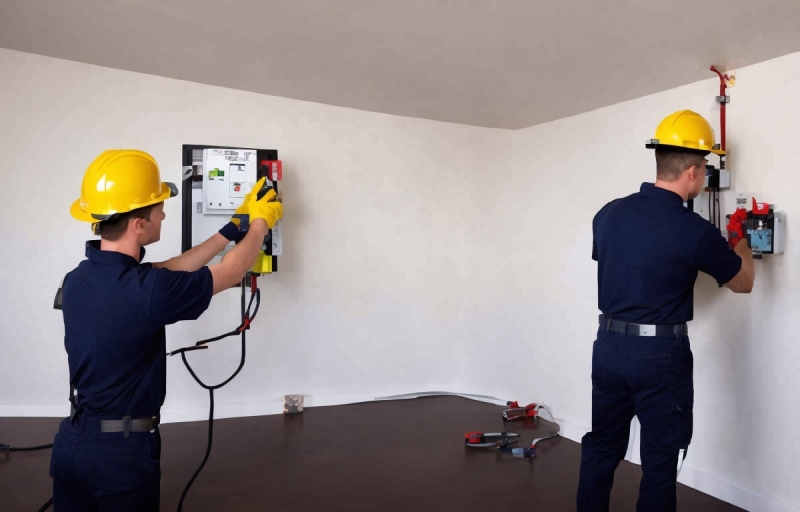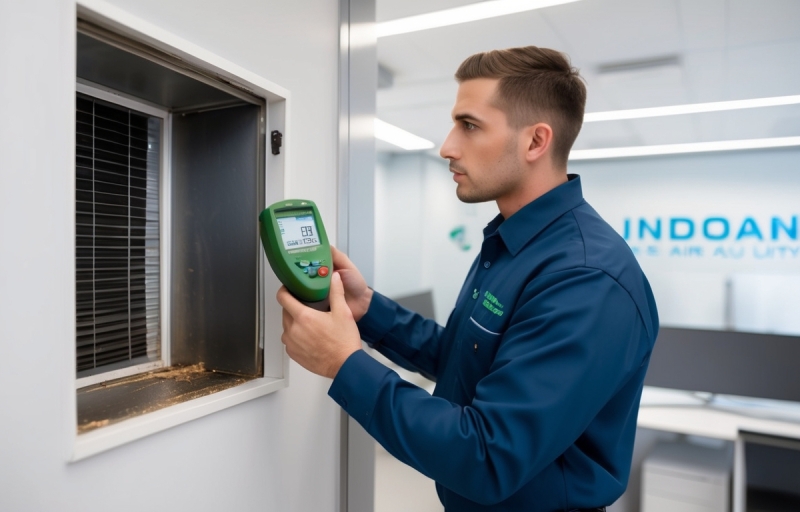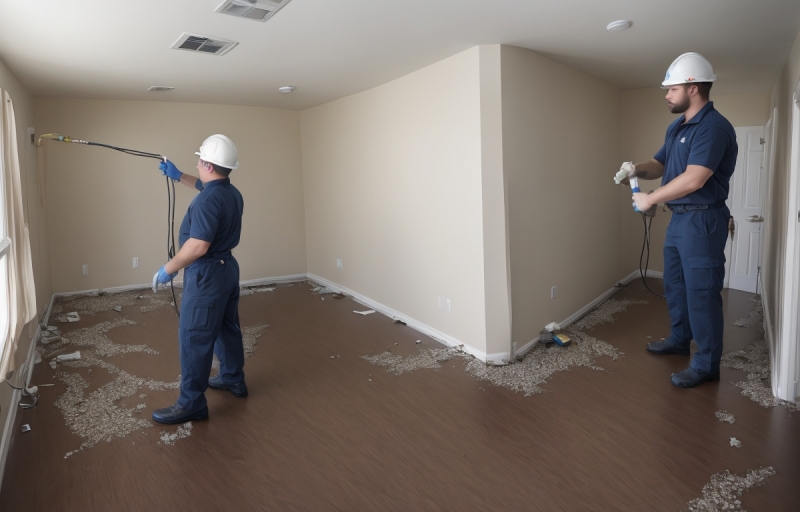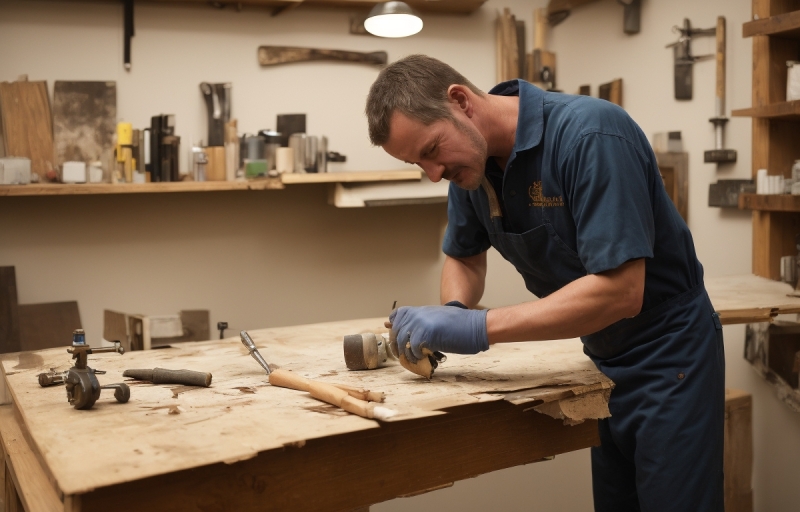Smoke damage can be devastating, leaving behind harmful residues and persistent odors that compromise indoor air quality. But did you know that improper cleanup can make things even worse? **At [Projekt Property Restoration](https://www.projektrestorationca.com), we specialize in professional smoke damage cleanup, ensuring your home or business is restored safely and efficiently.**
Professional smoke damage cleanup is essential to remove toxic particles, prevent long-term structural damage, and eliminate lingering odors. **Experts use advanced techniques and specialized equipment to restore affected areas, ensuring a safe and healthy environment.** Without proper remediation, smoke residues can seep into walls, furniture, and HVAC systems, causing ongoing health risks and costly repairs.
Ignoring smoke damage can lead to serious consequences, but the right restoration process can bring your property back to normal. **What methods do professionals use to ensure thorough cleanup? How can you protect your home from long-term smoke damage?** Let’s explore the critical steps and expert insights that make professional smoke damage cleanup a necessity.
Understanding Smoke Damage
Smoke damage occurs when soot, ash, and harmful residues settle on surfaces after a fire. It spreads quickly, affecting walls, ceilings, and furniture. The severity depends on the fire’s intensity and the materials burned. Smoke damage isn’t just cosmetic—it can weaken structures and pose health risks.
There are several types of smoke damage. Wet smoke results from low-heat, smoldering fires, leaving sticky, strong-smelling residue. Dry smoke comes from high-temperature fires, producing fine, powdery soot that spreads easily. Protein residue, common in kitchen fires, creates an invisible layer with a strong odor. Fuel or oil residue, though rare in homes, leaves thick, greasy deposits that are difficult to clean.
Common causes of smoke damage include house fires, electrical malfunctions, and kitchen accidents. Faulty wiring can spark flames, while unattended cooking leads to grease fires. Even minor incidents can cause extensive smoke damage. Professional cleanup is essential to restore affected areas. Learn more about our services and how we handle smoke damage effectively. For expert assistance, visit our contact page today.
The Hidden Dangers of Smoke Damage
Smoke damage affects various materials in a home differently. Walls absorb soot, leading to permanent discoloration and lingering odors. Furniture and fabrics trap toxic particles, making them difficult to clean. Electronics suffer internal corrosion, causing potential malfunctions or failures. Without immediate attention, these materials degrade, requiring costly replacements.
Beyond structural damage, smoke exposure poses serious health risks. Fine particles irritate the respiratory system, triggering asthma and other breathing issues. Long-term exposure increases the risk of chronic conditions, including lung disease. Children and the elderly are especially vulnerable to these harmful effects. Proper cleanup is essential to prevent ongoing health hazards.
Smoke particles don’t just settle; they remain suspended in the air, continuously affecting indoor air quality. Without thorough cleaning, these particles spread, embedding into surfaces and HVAC systems. This ongoing contamination worsens over time, making professional restoration crucial. Learn more about our services to ensure a safe and thorough cleanup. For expert assistance, visit our contact page today.
Why DIY Smoke Damage Cleanup is Not Recommended
DIY smoke damage cleanup may seem cost-effective, but it often leads to more harm than good. Household cleaners and basic tools cannot fully remove soot and smoke residue. Instead of eliminating contaminants, improper cleaning can spread soot particles, embedding them deeper into surfaces. This worsens discoloration and leaves behind persistent odors that are difficult to remove.
Without the right techniques, you risk inhaling toxic particles, which can cause respiratory issues. Smoke residue contains harmful chemicals that require specialized treatment. Using the wrong cleaning agents may react with soot, making stains permanent. Additionally, porous materials like drywall and upholstery absorb smoke, requiring professional-grade solutions for complete restoration.
Experts use advanced equipment to eliminate smoke damage effectively. Industrial air scrubbers, thermal foggers, and ozone treatments neutralize odors and restore air quality. Professional technicians also assess hidden damage, preventing long-term structural issues. Attempting cleanup without proper training can lead to costly repairs later.
For thorough restoration, trust experienced professionals. Learn more about our services and how we handle smoke damage efficiently. If you need expert assistance, visit our contact page to get started today.
The Benefits of Professional Smoke Damage Cleanup
Professional cleanup services use advanced techniques to eliminate smoke residue efficiently. High-powered equipment and specialized cleaning agents break down stubborn soot on surfaces. Experts also employ thermal fogging and ozone treatments to neutralize lingering particles. These methods ensure a thorough restoration, preventing further contamination.
Odor removal is a critical step in the process. Smoke odors penetrate walls, furniture, and HVAC systems, making them difficult to eliminate. Professionals use air scrubbers and hydroxyl generators to purify indoor air. This approach restores a fresh environment and improves air quality. Without proper treatment, persistent odors can cause discomfort and health issues.
Beyond surface cleaning, experts assess structural damage to prevent long-term complications. Smoke weakens materials, leading to hidden deterioration over time. Professionals inspect walls, ceilings, and flooring to identify compromised areas. Early detection helps avoid costly repairs and ensures safety. Their expertise minimizes risks and restores properties effectively.
For more details on expert restoration, visit our services page. Learn about our commitment to quality on our our mission section. If you need assistance, reach out through our contact page.
The Smoke Damage Cleanup Process: Step-by-Step
Professionals begin with a thorough assessment to determine the extent of smoke damage. They inspect walls, ceilings, and belongings to identify affected areas. This evaluation helps create a tailored cleanup plan. Once assessed, experts use specialized cleaning agents to remove soot and residue. High-powered vacuums, dry sponges, and chemical treatments ensure surfaces are restored without further damage.
Next, deodorization and air purification eliminate lingering smoke odors. Industrial-grade air scrubbers, ozone generators, and thermal fogging neutralize harmful particles. This step improves indoor air quality and prevents persistent smells. After purification, the final restoration begins. Damaged materials like drywall, flooring, and insulation are repaired or replaced. Repainting and refinishing restore the property’s original appearance.
Professional cleanup ensures a safe and habitable space. If you need expert assistance, explore our services for comprehensive restoration. Learn more about our approach by visiting our how it works page. For additional insights, check our blog for expert advice.
How Smoke Damage Affects Property Value
Untreated smoke damage can significantly lower a property’s value. Lingering odors, soot stains, and structural deterioration make homes less appealing to buyers. Over time, smoke residue seeps into walls, ceilings, and HVAC systems, leading to costly repairs. If not addressed, these issues can cause failed home inspections, reducing buyer confidence and delaying sales.
Professional cleanup eliminates harmful toxins and restores the property’s condition. Experts use advanced techniques to remove smoke residue, improving air quality and aesthetics. A properly restored home maintains its market value and attracts potential buyers. Without professional intervention, sellers may face lower offers or struggle to sell altogether.
Smoke damage also complicates insurance claims. Insurers may deny coverage if they determine the damage resulted from neglect. A thorough cleanup ensures compliance with insurance requirements, increasing the chances of a successful claim. Homeowners investing in professional restoration protect both their property and financial interests. Learn more about our services and how we can help restore your home. For additional insights, visit our blog for expert advice on property restoration.
Insurance and Smoke Damage Cleanup
Homeowners’ insurance often covers smoke damage, but policies vary. It’s crucial to review your coverage and understand the claims process. Prompt documentation strengthens your case. Take clear photos and videos of all affected areas. Keep records of damaged items, including receipts if available. A detailed inventory helps maximize your claim.
Professional cleanup services play a key role in working with insurance companies. They assess the extent of damage, provide accurate reports, and ensure proper restoration. Their expertise speeds up the claims process and prevents further issues. Insurance adjusters rely on their assessments to determine coverage.
Choosing a trusted restoration company makes a difference. Experts handle everything from soot removal to odor elimination. They also assist with paperwork, reducing stress during recovery. If you need reliable restoration, check out our services.
For more insights on property restoration, visit our blog. If you have questions about the process, our FAQ section provides helpful answers.
Choosing the Right Smoke Damage Cleanup Service
Hiring a professional cleanup service requires careful evaluation. Look for certifications from reputable organizations, ensuring they meet industry standards. Experience matters—companies with years of expertise handle complex smoke damage efficiently. Customer reviews provide insight into service quality, so check testimonials and ratings before deciding.
A reliable company should offer comprehensive restoration, not just surface cleaning. Smoke damage affects walls, furniture, and air quality. A full-service provider addresses all aspects, preventing lingering odors and hidden damage. Choosing a team that specializes in fire and smoke restoration ensures a thorough recovery process.
Verify credentials before hiring. Ask for proof of certification and insurance to protect your property. Ensure the company follows industry best practices and uses advanced equipment. Request a detailed estimate outlining the scope of work and expected results.
For trusted restoration services, explore their services and past projects. A reputable company will have a strong track record and transparent processes. Learn more about their expertise by visiting the about page. Taking these steps ensures you choose a qualified team for effective smoke damage cleanup.
Preventing Future Smoke Damage
Preventing smoke damage starts with proactive fire safety measures. Keep flammable materials away from heat sources and never leave cooking unattended. Regularly inspect and maintain electrical systems to prevent short circuits. Faulty wiring and overloaded outlets increase fire risks, so hire a professional for routine checks. Clean dryer vents and chimneys to avoid lint and soot buildup, which can ignite unexpectedly.
Install smoke detectors in every room, especially near bedrooms and kitchens. Test them monthly and replace batteries at least once a year. Fire extinguishers should be easily accessible in key areas like the kitchen, garage, and hallways. Ensure all household members know how to use them properly.
Consider investing in fire-resistant materials for furniture and curtains. A fire escape plan is essential—practice drills regularly to ensure everyone knows the safest exit routes. If smoke damage occurs, professional cleanup is crucial to restore your home. Learn more about our fire damage restoration services. For expert assistance, visit our contact page today.
Frequently Asked Questions (FAQs)
Smoke damage cleanup timelines vary based on severity. Minor cases take a few days, while extensive damage may require weeks. Complete removal depends on the materials affected and the cleaning methods used. Professional restoration ensures the best results. Staying in a smoke-damaged home is unsafe due to lingering toxins and odors. Costs for professional cleanup vary, typically ranging from a few hundred to several thousand dollars.
After a fire, ventilate the area, remove soot-covered items, and contact professionals immediately. Smoke damage can still impact health long after the fire is out, causing respiratory issues and other complications. Most insurance policies cover smoke damage cleanup, but coverage details depend on your provider. Lingering odors indicate incomplete cleanup. If you notice persistent smells, discoloration, or soot buildup, professional help is necessary.
Household cleaning products are not enough for thorough smoke damage removal. Specialized equipment and techniques are required. For expert assistance, explore our services. Learn more about our process by visiting our how it works page.

